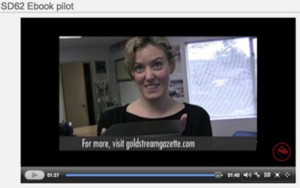The World Digital Library, operated by UNESCO & the American Library of Congress launched today with content from the span of continents. There is not a great deal of content, mind you – not yet, in any case. And what there is, is sometimes curious (for e.g. North America: USA: Arts & recreation: Music: … yields 4 pictures: Pow-Wow Princess Song [which is actually a video]; A scan of a letter from Linda Kelly, Sherry Bane, and Mickie Mattson to President Dwight D. Eisenhower Regarding Elvis Presley; A photograph of two young Polynesian women, one playing the ukulele; and A photograph of Elvis Presley meeting with President Richard M. Nixon at the White House). The navigation is a bit of a puzzle (for instance, it’s not clear why the Heading under North America for Place: United States of America: subdivides into “Narrow Results” that list Cuba, Sierra Leone, Mexico, Canada, Russian Federation, Brazil, Spain, France, Bolivia, Bahamas … and then link to “more” – and following the paths displayed in the blue top box, does not make much sense). Nevertheless, its mission is an interesting one:
“to promote international and intercultural understanding, expand the volume and variety of cultural content on the Internet, provide resources for educators, scholars, and general audiences, and to build capacity in partner institutions to narrow the digital divide within and between countries.[1] It aims to expand non-English and non-Western content on the Internet, and contribute to scholarly research. The library intends to make available on the Internet, free of charge and in multilingual format, significant primary materials from cultures around the world, including manuscripts, maps, rare books, musical scores, recordings, films, prints, photographs, architectural drawings, and other significant cultural materials.[2][3][4]” – Quoted from Wikipedia
It is a project with great promise.
